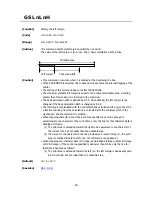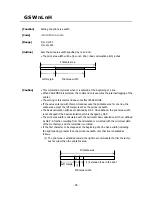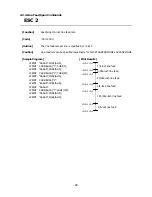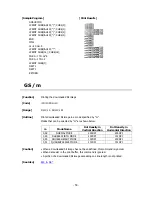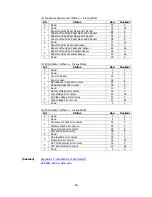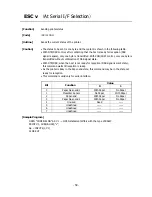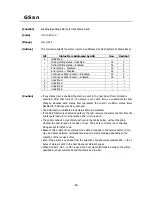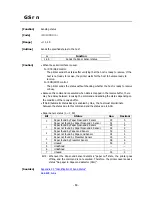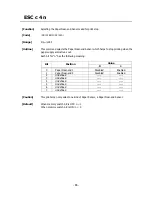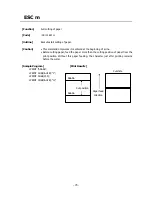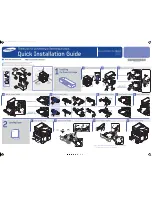
- 56 -
2.2.6 Status Commands
DLE EOT n
[Function]
Sending status in real-time
[Code]
<
10
>
H
<0
4
>
H
<
n
>
[Range]
1
≦
n
≦
6
[Outline]
Sends in real-time the status specified by “n”.
n Status
1 Printer
status
2
Status caused by an offline condition
3
Status caused by an error
4
Continuous paper sensor
5 Error
details
1
6 Error
details
2
[Caution]
• Each status represents the current status. It is 1 byte data.
• The status is transferred without checking whether the host is ready to receive or
busy.
• This command is executed even if the printer is in offline state, receive-buffer full
state, or error state.
• This command is dealt with when it is received.
• With serial interface specifications, this command is executed in offline state, receiving
buffer full state, and error state.
• With parallel interface specifications, this command cannot be executed while the
printer is in Busy state. When memory switch 1-3 is ON, the printer does not enter
Busy state in the offline state and error state.
• If ASB (Automatic Status Back) is enabled by GS a, it is necessary to discriminate
between the status due to ASB and the status due to this command.
• This command can be executed even if printer setting by ESC = is invalid.
• If another data string of <10>H<04>H<n> (1 n 4) is received, the printer acts the
same way as with this command. Therefore, the user should be reminded of this fact.
[Example 1]
Suppose a command “ESC * m nL nH [d1...dk]”, where d1 =
<
10
>
H, d2 =
<
04
>
H,
d3=
<
01
>
H.
• The DLE EOT n command cannot be interleaved into the code string of another
command consisting of 2 bytes or more.
[Example 2]
If the printer sends DLE EOT 3 after the host has sent up to ESC 3 in its attempt to
send ESC 3 n, the printer handles the ESC 3 as ESC 3 <10>H. Thus, the user should
be cautious.


